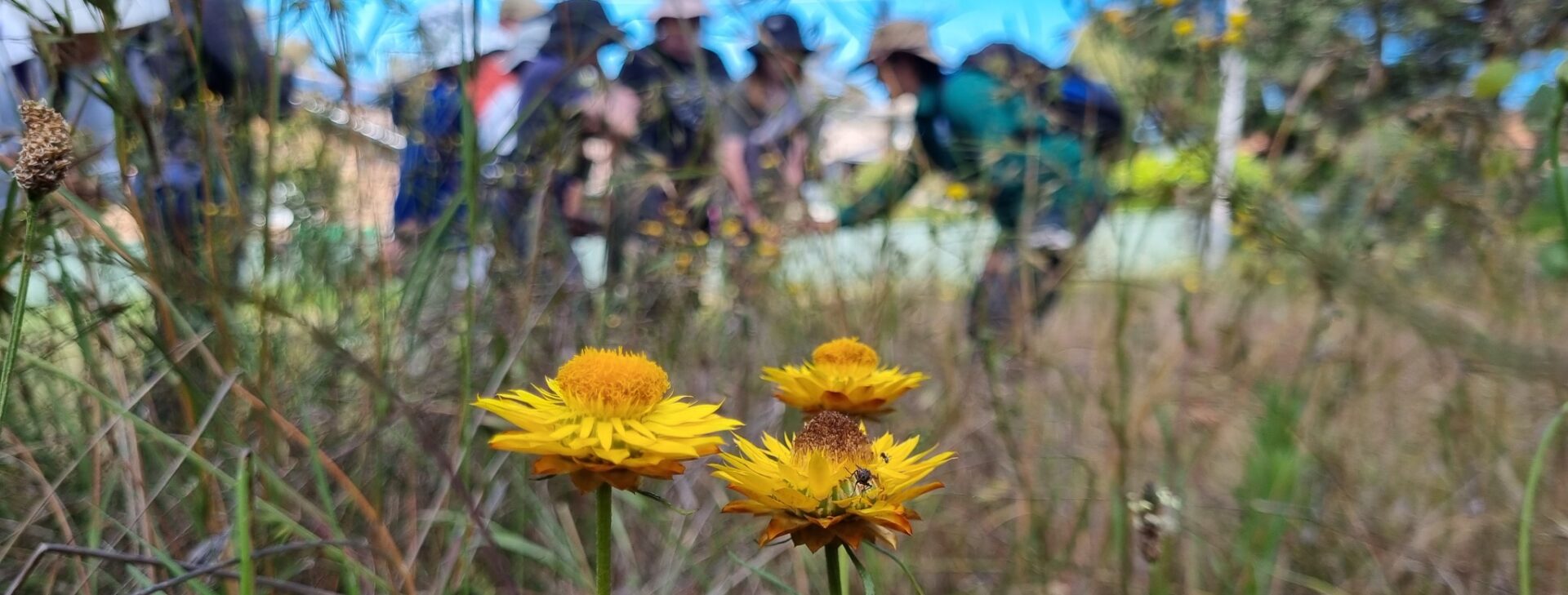The view from Coordinator’s desk:
Hi,
Welcome to the first Southern ACT Waterwatch Catchment Update for 2024. Just in time for mid summer, 3 of our rivers, the Murrumbidgee, Cotter and Paddy’s were closed by the ACT Government to ‘primary contact’ (aka swimming) at various popular swimming spots due to high levels of bacteria. This is the downside of a wet season. Whatever has been lurking in the surrounding catchment can be washed into our waterways. Bacteria, and this includes our old friend ‘blue/green algae’ which is in fact tiny green bacteria cells, gobble up nutrient pollution then reproduce using extremely fast cell division. This season it was the upland creeks and rivers turn to off load pent-up organic matter from their catchments. Some will no doubt originate from livestock poo, but others i.e in Namadgi National Park, are a likely continuation of the after affects from the 2020 fires where decomposing dead/burnt vegetation is turning into compost.
 
Rainfall statistics courtesy of Bureau of Meteorology Sign at Tharwa in December (Photo P Brown)
Cheers, Martin Lind   
Waterwatch Coordinator.
WW Teams update: No changes to our teams this Summer. There are vacant sites in Tuggeranong around the lake and on a creek. Let me know if you would like a change of scenery or have friends/family who would like to join the party.
Around the Rivers and Creeks: Not surprisingly all of our rivers were flowing high by January. The only exception was the Naas River which only got to ‘medium’. It is very steep and so doesn’t hold water for as long. Phosphorus levels were notably up in the Gudgenby, Orroral and Naas Rivers as organic matter was flushed from the national park. This also helped feed the many weeds growing along the banks near the Naas Road bridge. Already mentioned were the bacterial blooms in the Murrumbidgee, Paddy’s and Cotter Rivers. A sign was posted at Murray’s Corner, Paddy’s River, in February also warning swimmers of blue/green algae. Curiously the upper parts of the Cotter River revealed its organic pollution through elevated nitrates rather than phosphorus. The dams on the river all began overflowing again after filling up in January, but the big dam at the bottom stopped by late February. In spite of all the rain the only spike in turbidity was seen in the Murrumbidgee above Tharwa in February (80NTUs).
The top part of Tuggeranong Creek had enough water to start flowing again at its headwaters. Vera discovered that it is still a popular yabby fishing spot.
 
Another sign, this time at Paddy’s River (Photo MBlume) & the Murrumbidgee in high flow at Point Hut Crossing (Photo PBrown)
Around the Lakes and ponds: The big flows brought mud into Isabella Pond which then, unsurprisingly, sloshed over the zigzag wall into Lake Tuggeranong by January. The muddy water flowing down the concrete channels were also high in organic pollution, from the Fadden side, and dissolved alkaline salts from the Tuggeranong Creek side. Stranger Pond and Point Hut Ponds both had elevated nutrient pollution levels but only Point Hut Pond had the resulting blue/green algal bloom.
Hypoxic conditions, when water has less than 4mg/L of dissolved oxygen, was an issue in Point Hut Ponds and the Conder Wetlands that feed it. The same thing happened in the Old Dam on Cooleman Ridge which was still covered in floating azolla ferns. Another sign was posted on Cooleman Ridge at Kathner Street Dam. Instead of bacteria this one warned folks that any yabby traps and fishing are now illegal in Canberra’s nature parks.
  Sign posted on Cooleman Ridge (Photo HGovey) & The dreaded blue/green algae enjoying Point Hut Pond in Feb (Photo JPearson)
Around Tidbinbilla and Namadgi: The flavour of summer was phosphorus. High levels were measured in creeks and rivers in both the national park and Tidbinbilla Sanctuary. In Namadgi National Park this fed the overgrowth of weeds, like St John’s Wort (Hypericum sp) in the bog areas of Hospital Creek and caused the creek itself to be completely covered in aquatic vegetation. This was all happening along with high flows after heavy rainfall. The frogs loved it. At least 3 species sang happily over most of December. For poor Madison, this also meant the mozzies were having a great time in the Orroral River!

Hospital Creek in December. (Photo M Popham)
Around the schools and youth groups In January there was a gathering of senior high school students from around the country at the Australian National University for the National Science Youth Forum. Yolandi and I ran a morning activity looking at the water quality of Sullivan’s Creek. There was the popular World of Waterbugs holiday event at Tidbinbilla. At Outward Bound a group of pre-teens got muddy and wet catching waterbugs near Tharwa and the ACT Scouting had a planning day where I spruiked the virtues of Waterwatching and Landcare. Other than providing some equipment to Alfred Deakin High School and curriculum planning with Trinity Christian College it was quiet on the youth front. There was a meeting with our champion from the scouting community Vance to gird our loins for a scouting invasion in April. Look forward to more on this in the next chapter.

Water testing at the national Youth Science Forum 2024 (Photo T Cheng)
A huge thank you to all. Keep up the great work!
Martin |

